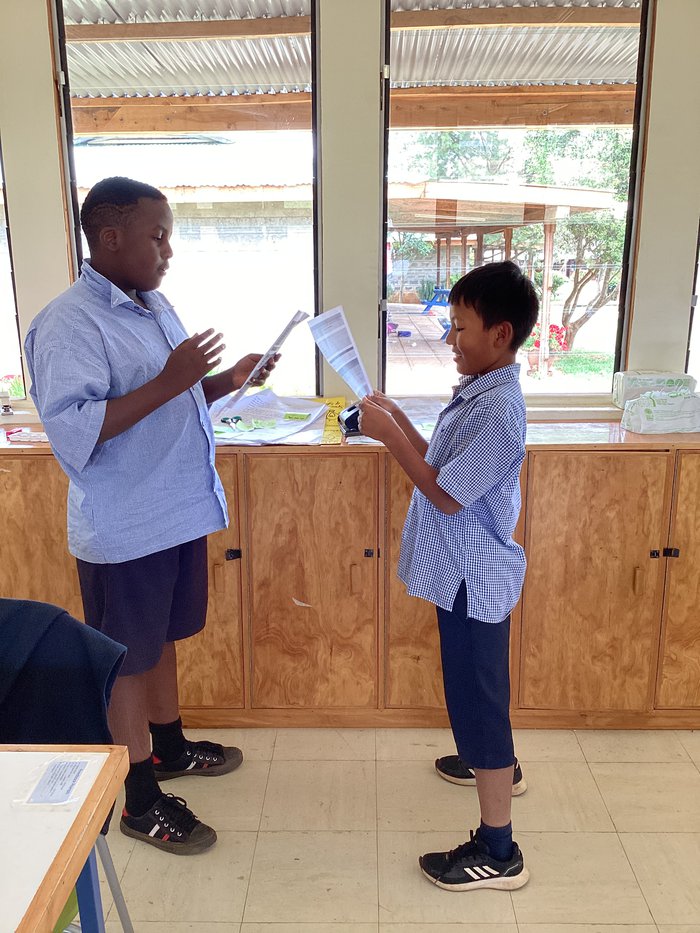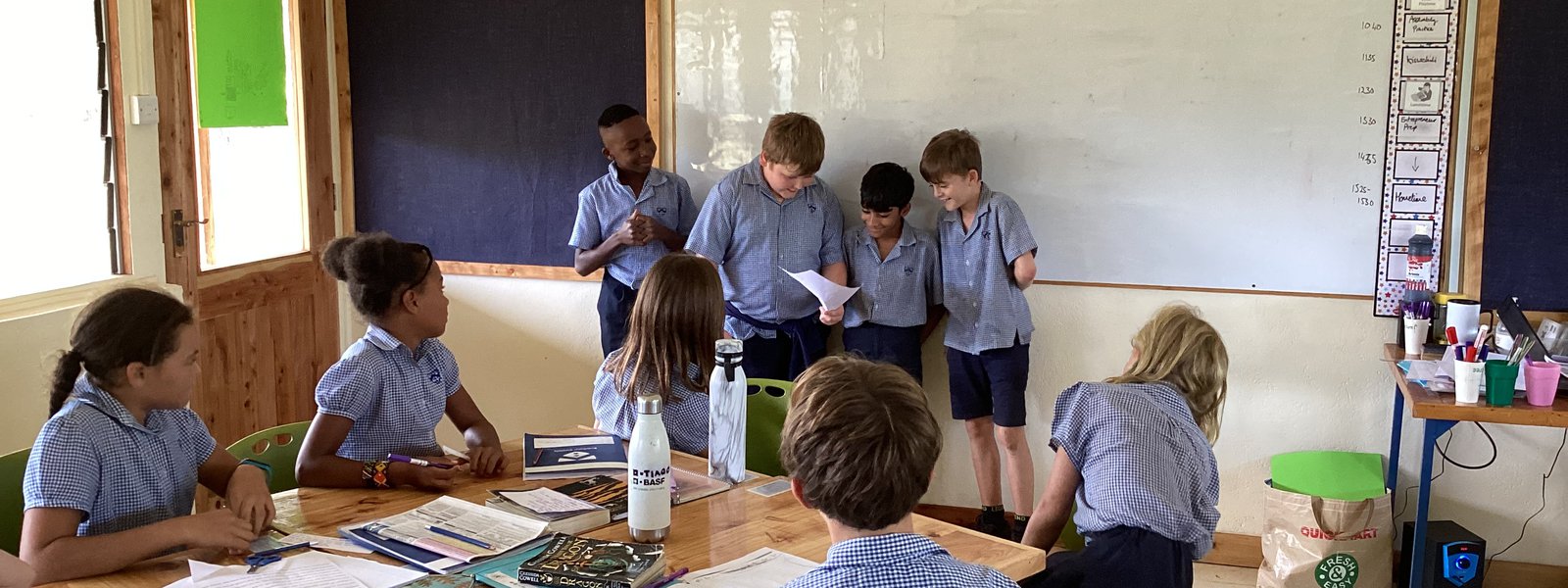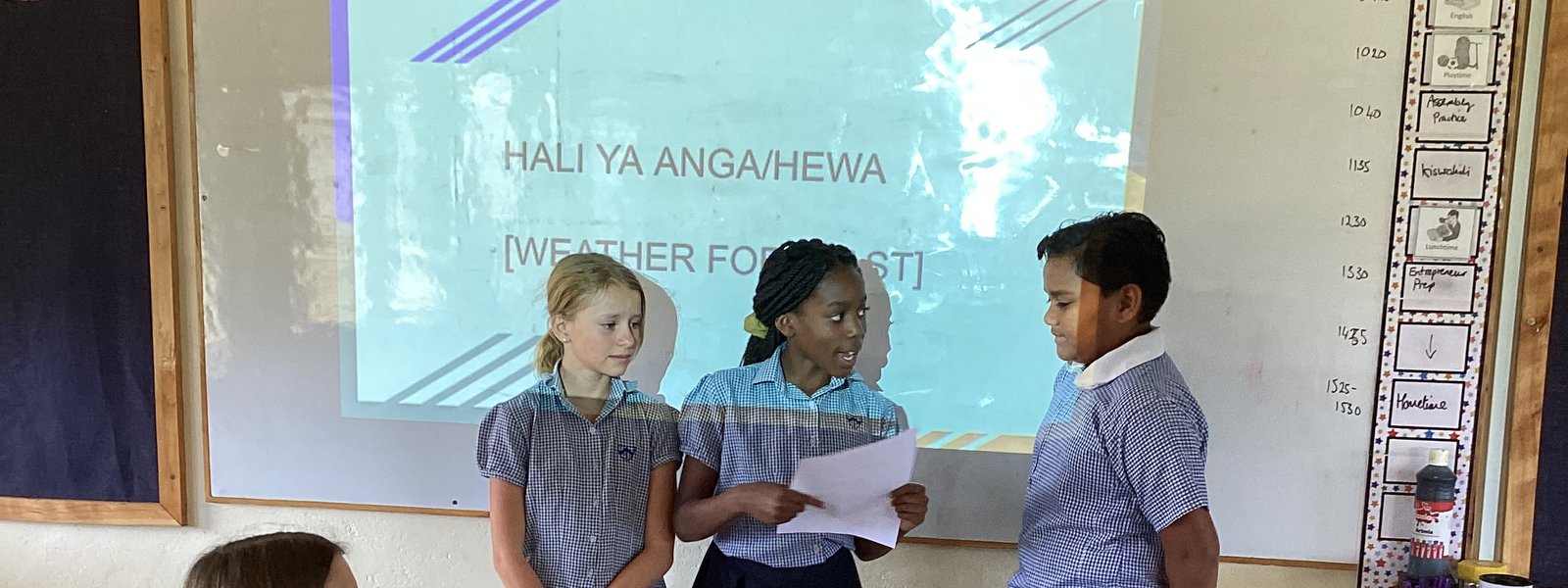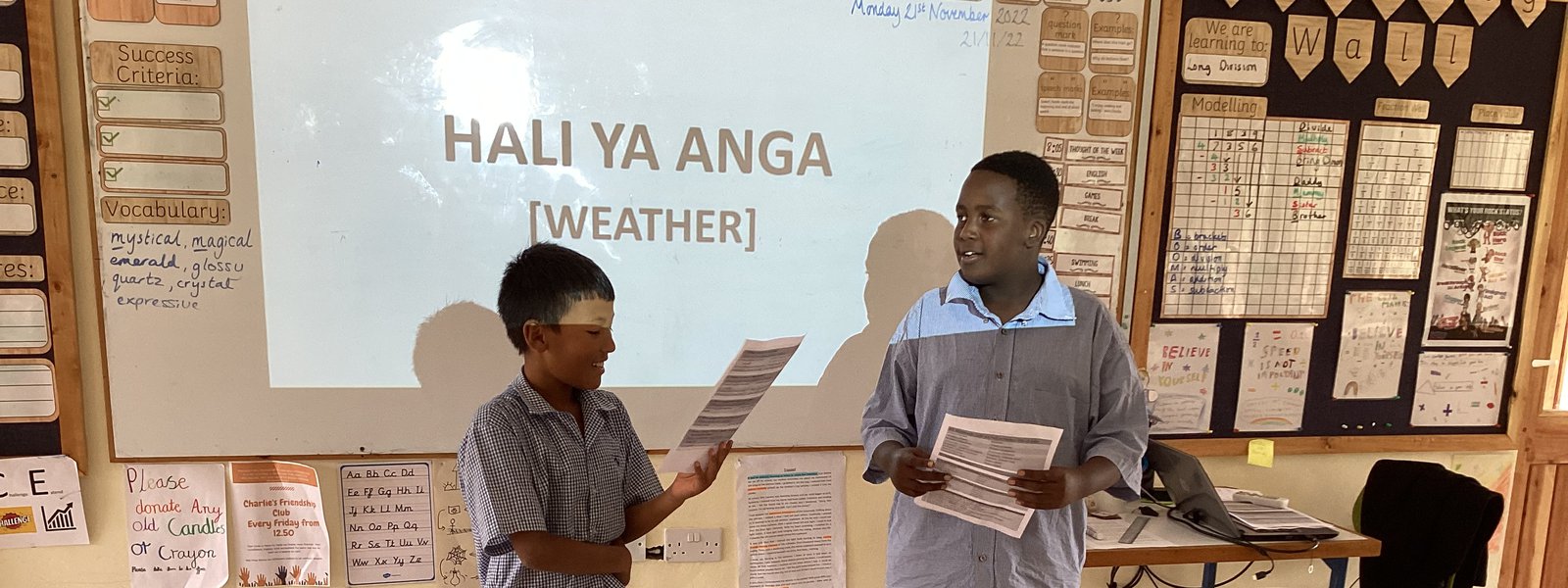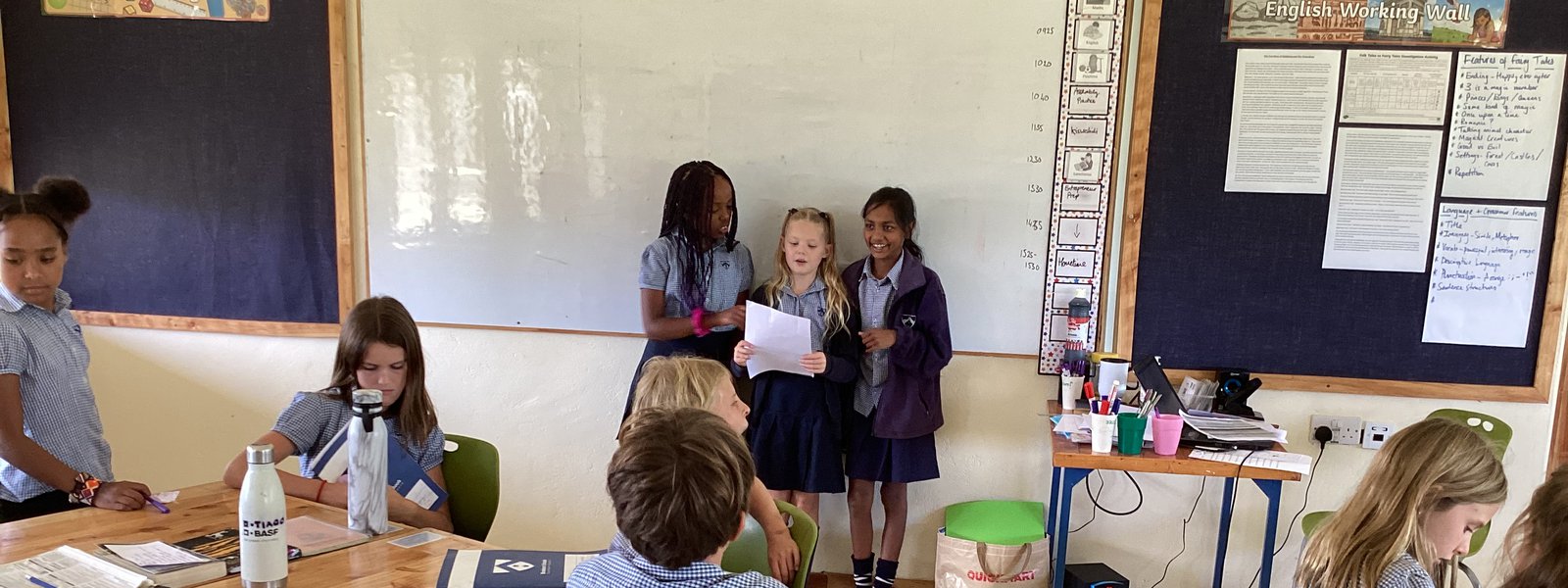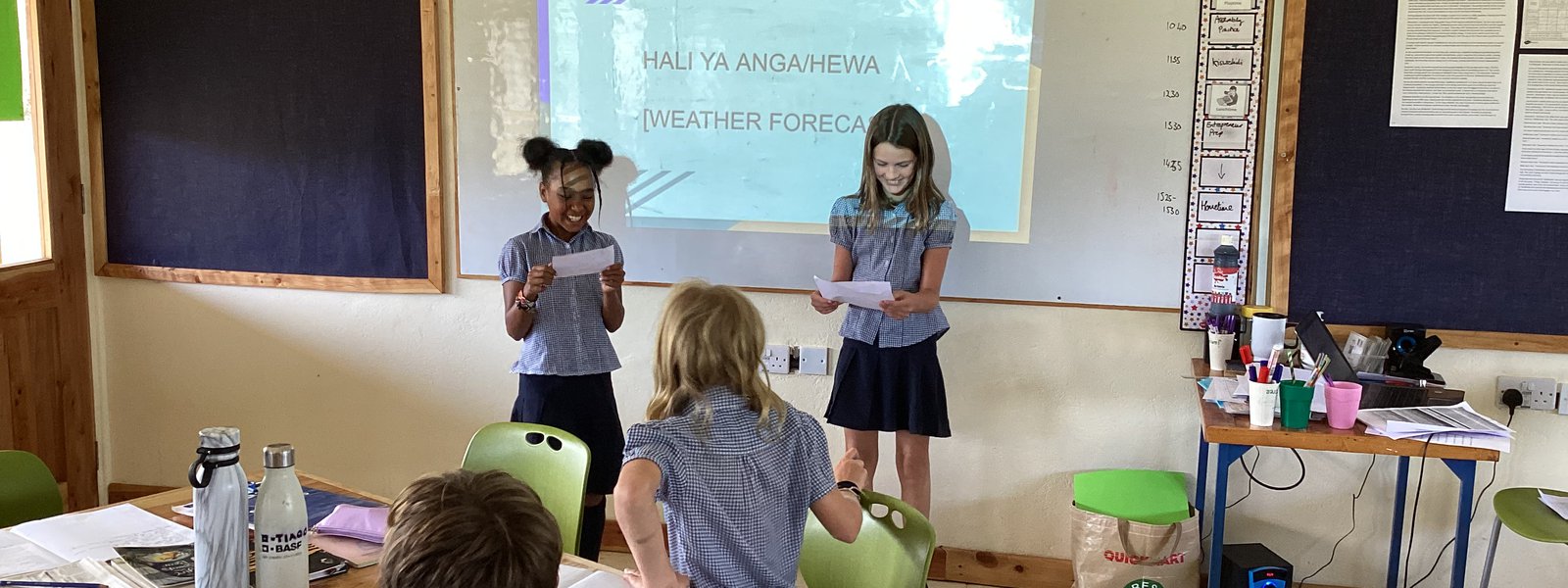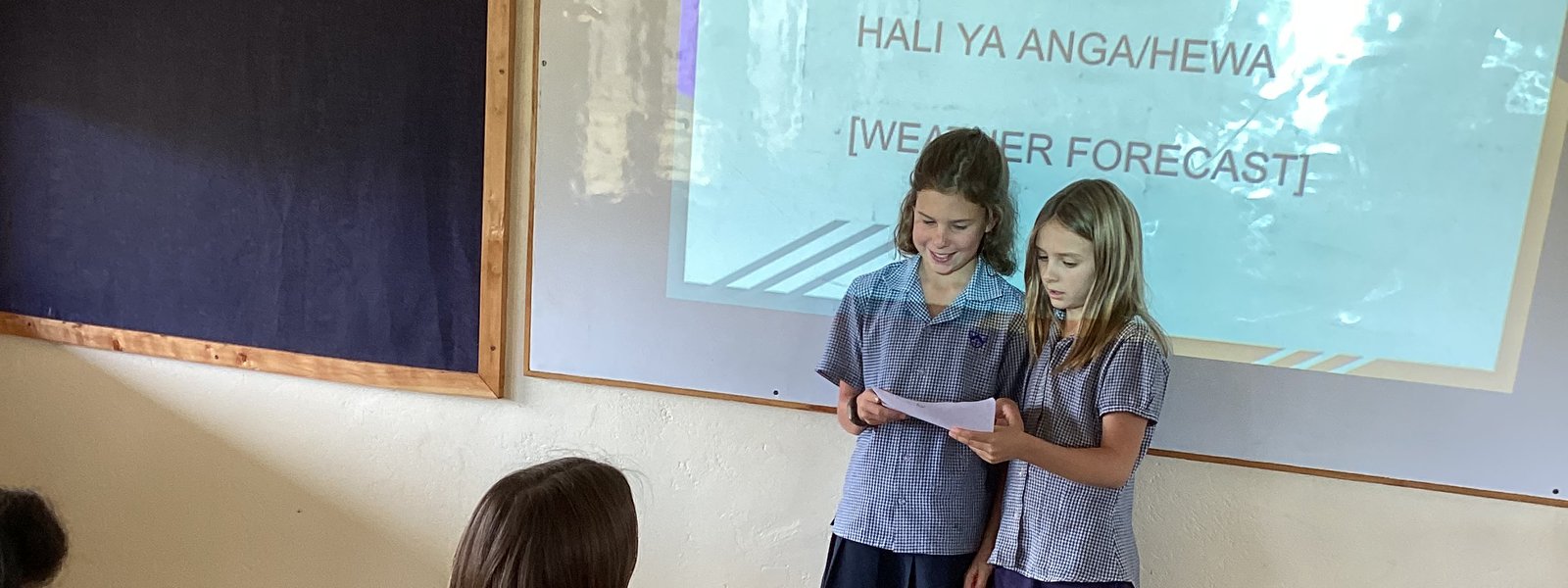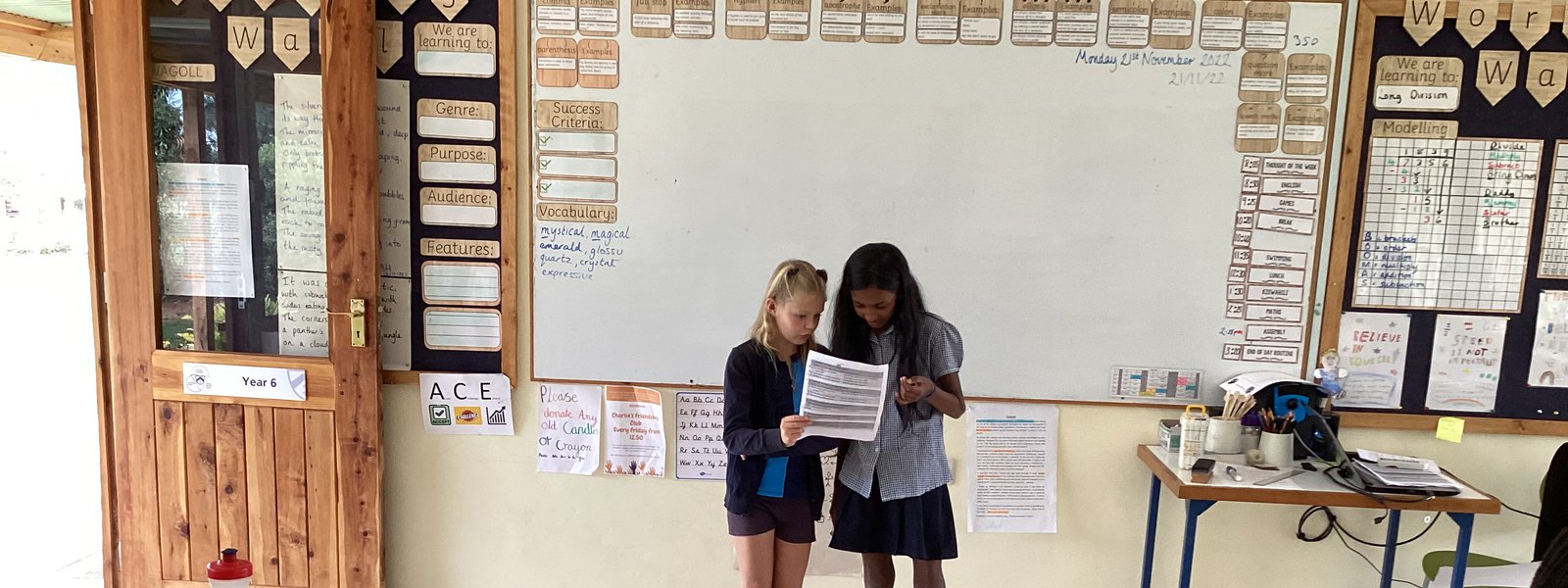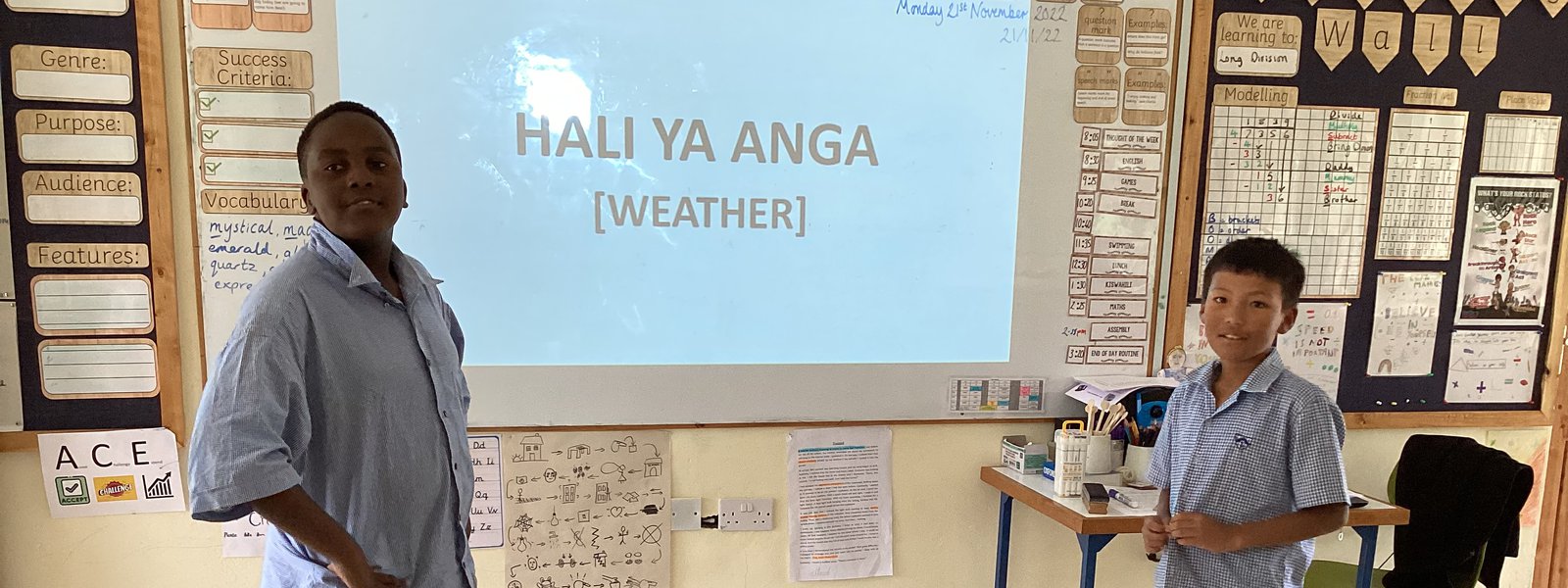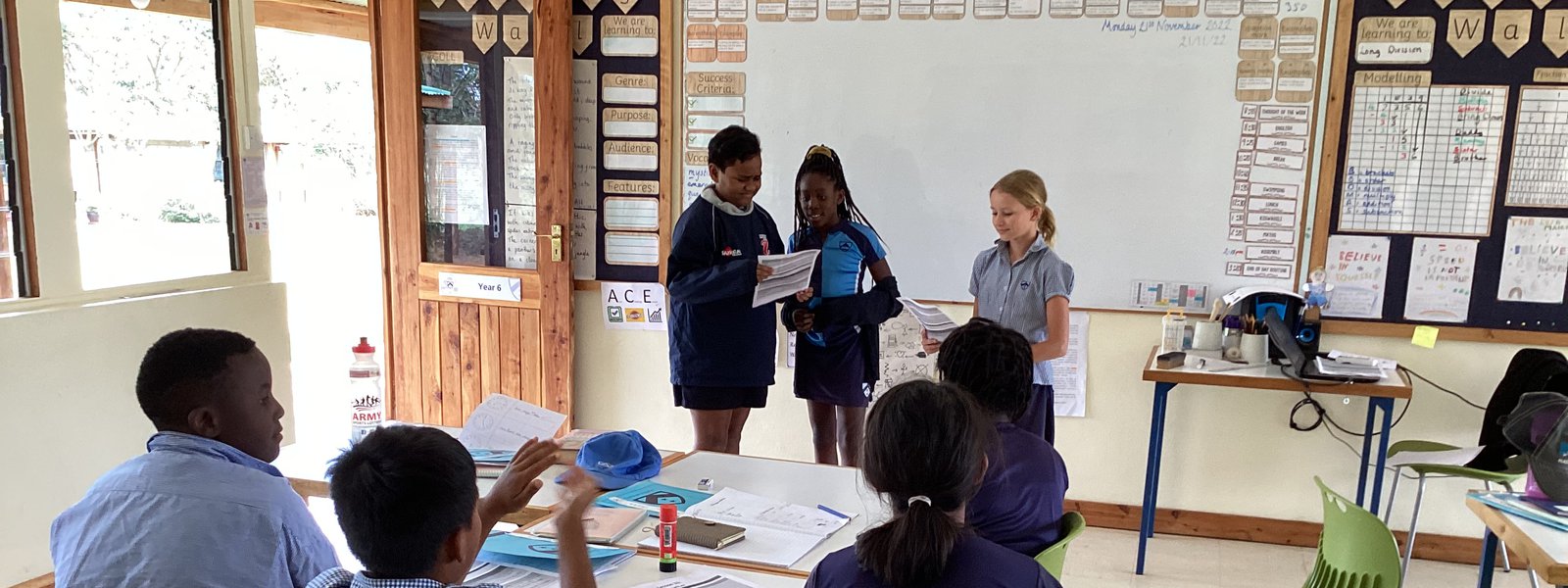Magic Weather
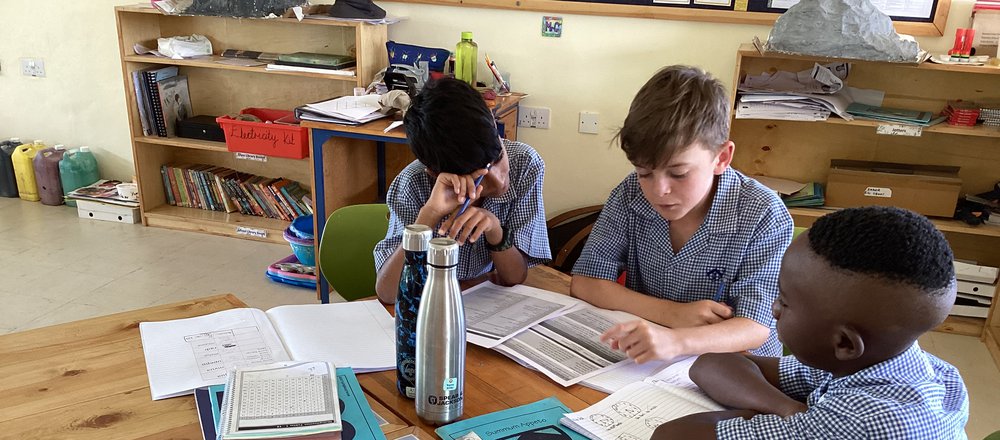
1st December 2022
The focus of learning in Year 6 Kiswahili lessons has been different environments in Africa and around the world. The children had an opportunity to share what they know about the different environments that they have visited. Around Nanyuki, we have: Mt. Kenya, which can be clearly seen from our school when it's not ‘shy’, the Lolldaiga hills, Ol Pejeta conservancy, the equator, Ngare Ndare...and many more!
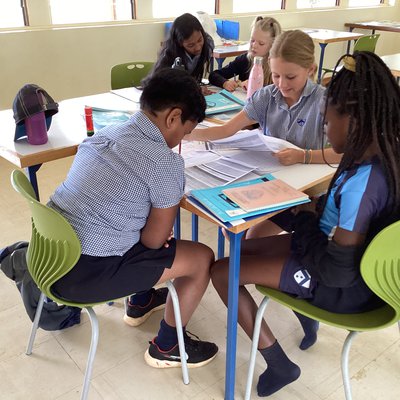
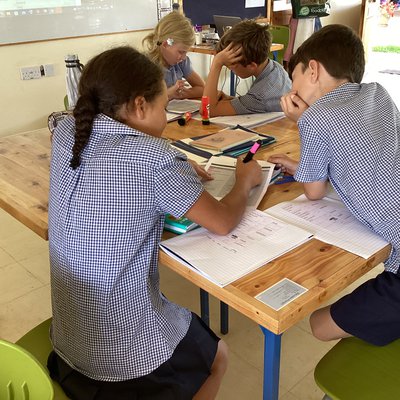
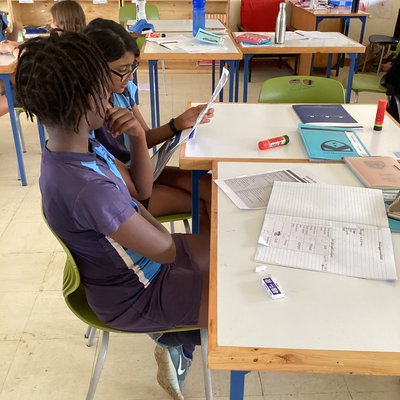
In the past two weeks, we have been learning about ‘Hali ya anga’ (Weather conditions). In Nanyuki, the summer is short and warm with clear beautiful skies whereas the winter is short, cool, wet and partly cloudy. The amazing part of our environment is the unpredictability of the weather - it loves to play hide and seek. It is sunny and warm one moment then, all of a sudden, a downpour can follow! This has been really helpful to promote discussion as the children learn how to talk about the weather. They worked in groups to write a weather forecast which they passionately presented in class.
Grammar in Kiswahili is quite different although very interesting since we express weather conditions as nouns and not as adjectives like in English. For example:
Kuna baridi. 'There is cold' rather than 'It is cold'.
Kuna Joto. 'There is heat' rather than 'It is hot'.
Hakuna baridi. 'There is no cold' rather than 'It is not cold'.
Hakuna joto. 'There is no heat' rather than 'It is not hot'.
